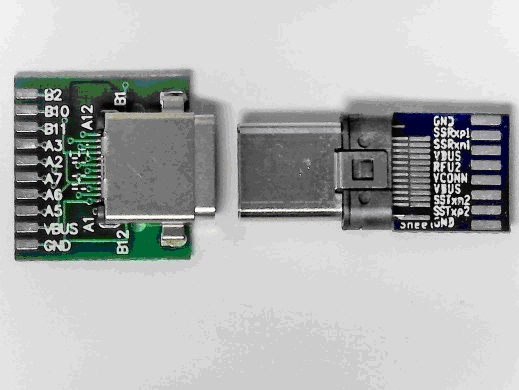The Advantage of using USB Type-C for Embedded Computers
Since the 1990s, USB or Universal Serial Bus is one of the most used and well-known methods of connections from simple everyday life to industrial applications. Without USB technology, users had to connect numerous amounts of peripheral devices to a computer. There were too many ports and that forced computers to be larger then they needed to be. When the USB was introduced, all of these different peripheral devices could all be connected with a single port. Almost every brand favorable of convenient connections utilizes USB. A new breed of USB technology is released this year called USB Type-C. Apple has recently introduced a USB type-C port on their new MacBook. This new design includes many benefits for the use of embedded computers. This article explores the new technology and integration of USB Type-C connections.
USB Type-A & USB Type-B
Before USB Type-C can be explained, we must know what the fundamentals of USB Type-A and USB Type-B are.

USB Type-A
Type A is the most well known USB cable used today. It is a standard plug that acts like a host for the USB mostly seen on desktops and tablets, where it connects the device to another device with a cable that utilizes USB technology (mouse consoles, keyboards, chargers). Devices like flash drives are an exception where a cable is not present for integrating with computers. USB 1.1, 2.0 and 3.0 are compatible with USB Type-A.
USB Type-B
USB Type-B or (standard B) has a square construction mainly seen on USB non host systems like printers and external hard drives. There are many different kinds of type-B connections. The “standard B”, as previously mentioned, was built for USB 1.1and 2.0. These are more commonly seen connecting devices like printers to computers. The next is the mini USB, which is smaller and mainly used in devices like smartphones. The mini USB is becoming out of date in the industry as newer technology arises. Smaller than the mini USB is the Micro-USB. This design is commonly integrate in newer smartphones and tablets. Next the USB 3.0 is like the standard-B type but it has the ability to operate on USB 3.0 speed.
USB Type-C
Industrial computing operations have proven to be effective, but to take the game to the next level is to integrate faster and more reliable connections like the USB Type-C. Type-C is just a tiny port available in smartphones, laptops, tablets and computers. So what advantages does USB Type-C have over the other designs? As devices are getting smaller and thinner, USB slots also have to adapt to the changes well; that’s why USB Type-C is so important. USB Type-C delivers maximum power of wattage up to 20V(100W) and data of transfers rate up to 10 GB per second for running demanding tasks and powerful machinery. The USB Type-C is also compatible with USB 2.0 and 3.0. USB type-C is also reversible so you’ll never insert a USB the wrong way, a common problem most users experience.

USB Type-C for Embedded Computers
USB Type-C brings simplicity to all devices. This design will create new insight on how producers will cope with new challenges the new technology will bring. There are multiple requirements. The Type-C connector, cable, power delivery 2.0, and alternate modes will be integrated separately and individually. However designers can implement a single chip solution for the new USB technology by a Serializer/Deserializer (SerDes). SerDes provides high speed connections for input/output.
The PHY, or the physical layer of the OSI connects a link layer to a physical medium. It needs to be for efficient and flexible in its range. For smaller adaptations, a limit to the total amount of the voltage supply should be integrated.
The USB Type-C defines speeds as it increases data speeds of up to 10 GB per second. Type-C also allows physical wires for devices-to-host connections. It works in ways of both communicating and faster charging power supply. It can handle various applications of input/output video to copying numerous amounts of files. The USB 3.0 standard increases the data transfer rate, includes full-duplex transmission, has new interrupt-driven protocol, and gain power of wattage for the I/O device by using a higher pin count connector. The embedded USB application likely to use USB 3.0 when the speed, interrupt and power requirements of the I/O device need its advanced features.




